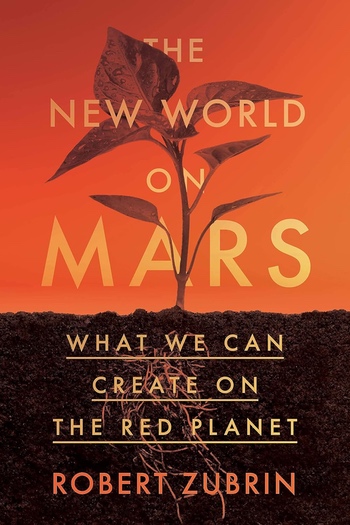Review: The New World on Marsby Jeff Foust
|
| There are, in his view, no technological showstoppers to establishing human settlements on Mars. |
However, the company has made clear that Starship’s long-term goal is to send humans to Mars, and in large numbers, fulfilling founder Elon Musk’s desire to make humanity multiplanetary. While Musk frequently talks about those visions, like having a million-person city on Mars by mid-century, he’s said little about how those people would live or what they would do there, considering them as minor details to be left to others.
In steps Robert Zubrin, who has been thinking about how to both get humans to Mars and how they could live there for decades. In The New World on Mars, he is willing to let SpaceX do the driving to get to Mars, focusing instead on aspects of life on Mars from building habitats to social and governance structures.
The first part of the book is focused on technological aspects of living on Mars: getting there, building places to live, growing food, and producing energy, among other things. Zubrin shares extensive details on all those areas, from calculations involving the rocket equation to formulae for producing critical chemicals. There are, in his view, no technological showstoppers to establishing human settlements on Mars.
| What is so compelling about Mars—a world that makes the most inhospitable places on Earth seem like the Garden of Eden—that would drive people to live there, beyond saying that you’re living on Mars? |
The second part of the book moves from the physical sciences to the social sciences, examining how people would live in these communities and how they would be governed. He shows a libertarian bent in these pages, contemplating societies that do away with many of the laws and regulations that he believes binds us today. It is, though, at other times a little more reactionary: he envisions Martian society discarding views of “romantic relationships being a form of self-realization, recreation, or game” in favor of “finding the right partner for a lifetime project of raising a family.” In this world, divorce would be “frowned upon” and those who cause it potentially penalized by law—not all laws are going away in this libertarian society—and women being rewarded through reduced tax rates for each child they give birth to, while encouraging them to stay in the workforce. (Implicit in this section of the book is that marriage on Mars would be a strictly heterosexual institution.)
For all the discussion of how people would live on Mars, there’s far less about what they would do. What is so compelling about Mars—a world that makes the most inhospitable places on Earth seem like the Garden of Eden—that would drive people to live there, beyond saying that you’re living on Mars? Zubrin, as he has stated in the past, suggests that the biggest export from Mars, at least in the early eras of settlement there, will be intellectual property: inventions that the Martian inhabitants develop to survive given limited labor and resources. While an intriguing idea, without knowing what those inventions are and their value it’s hard to build a business case for a Mars settlement. The other concepts he includes, such as producing luxury items, tourism, or providing suppliers for main belt asteroid miners, also seem either insufficient or only viable in the long term.
Zubrin makes clear in the book that he is not backing Musk’s grandiose plan of a million-person Mars city in three decades: he estimates it will take more than a century and a half to reach that population level through a combination of childbirth and immigration, adding that the population would likely be spread among many cities rather than a single Martian-tropolis. Yet, as the book demonstrates, both are driven by a vision of a substantial human presence on Mars, one that is backed by science and technology. Those who share that vision will find The New World on Mars reaffirming. Those who don’t may come away from the book seeing how people could live on Mars, but less convinced why one would want to go.
Note: we are now moderating comments. There will be a delay in posting comments and no guarantee that all submitted comments will be posted.
